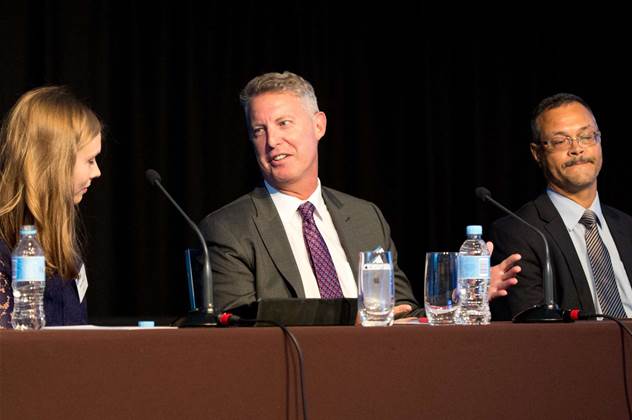Harris has invited “as-a-service” technology providers to co-locate within the same facilities as NSW Government agencies using the lure of an all-but-assured market of buyers.

It promotes competition for government services, but keeps public data within a clearly defined network perimeter. And in time, he expects to strike more deals that allow both agencies from other jurisdictions and even non-government buyers to access the same services.
One of the first private sector service providers to set up in the marketplace offers identity-as-a-service for all NSW Government employees. That in turn is an enabler for easier agency consumption of the next generation of services to serve this closed market.
Harris recognised that in a world where a choice of frictionless services is a mouse click away, identity management is the critical enabler. It provides a level of control for CIOs, and ease of consumption for users.
It’s for this reason that - while they serve radically different goals - Pedro Harris’ GovDC project shares a good deal of common ground with the Department of Human Services’ MyGov.
MyGov is a portal where Australians can use a single digital identity to access both their taxation (ATO), healthcare (Medicare, PCEHR) and welfare (Centrelink, Child Support, NDIS) services.
It has achieved what many Australian Government shared services projects have struggled with in the past - the ability for citizens to access a multitude of services from different agencies in one place.
Government-to-citizen digital channel
The project was, somewhat unfairly, initially labelled a revisit of the ill-fated “Australia Card” vision of the 1980s, which had attempted to achieve much the same outcome.
Gary Sterrenberg, CIO of the Department of Human Services and the newly-crowned Government CIO of the Year, is careful never to make reference to that 1980s experiment, or to ‘shared services’, for that matter.
“Our challenge was to build a government-to-citizen digital channel to streamline and simplify interactions with government,” he told his peers at the event.
“Even the most simple things can be difficult with government - a change of address can require 20 forms and months of effort for you to get those processes through.”
There is a critical difference in scope between what would have been proposed to achieve this outcome a decade ago to today.
Human Services saw that it wasn’t necessary to build a new system or co-locate the many data sets contained by participating agencies to offer a single digital shopfront, nor was the project about collapsing their IT functions into one central provider of services.
MyGov would simply create a single digital identity for every Australian that uses the service, and draw the necessary data from existing systems that remain under the stewardship of the agencies that collect it.
By focusing on a common digital identity, rather than common systems, Sterrenberg could answer concerns about privacy and civil liberties, but also about security.
He recognised that if he had chosen one system to hold all of a citizen’s identifying data, financial records, healthcare records and dealings with government, it would have created an irresistible honeypot for hackers seeking to pursue identity fraud.
Sterrenberg sold in MyGov not only on these practical and political conveniences, but also on anticipated savings.
Human Services had to bid for funding from government bean counters in much the same way a startup might to a venture capitalist, the key criteria being “where we could save the most.”
“The Government will then choose projects based on savings versus the project risk of delivering those savings,” Sterrenberg told his peers at the Benchmark Awards.
MyGov was successful because rather than attempting to book anticipated savings against a consolidation of infrastructure and operational teams, it anticipated “the significant savings and reduction in red tape of moving to a digital world.”
While the Government couldn’t make use of the system mandatory, it managed to do so by proxy by ensuring MyGov was the only channel through which Australians could enjoy the convenience of online tax returns. This would prove crucial when it was later discovered that MyGov hadn’t initially secured the service effectively.
Thankfully for Sterrenberg, concerns over Human Services’ security credentials hasn’t slowed adoption of the system. Today, over 6.2 million citizens have used the channel, accessing over nine million ‘linked’ services and making in excess of 48 million transactions.
The Government is now mulling over proposals to extend the service further, assuming security and sovereignty issues are resolved.
Read on for the key ingredients to shared services success...


_(20).jpg&h=140&w=231&c=1&s=0)






_(26).jpg&w=100&c=1&s=0)

 iTnews Executive Retreat - Security Leaders Edition
iTnews Executive Retreat - Security Leaders Edition












_(1).jpg&h=140&w=231&c=1&s=0)



